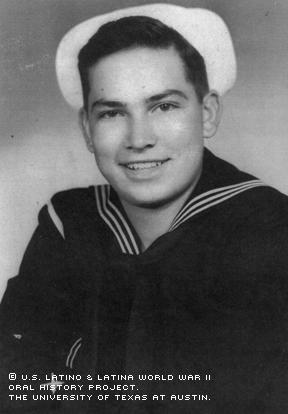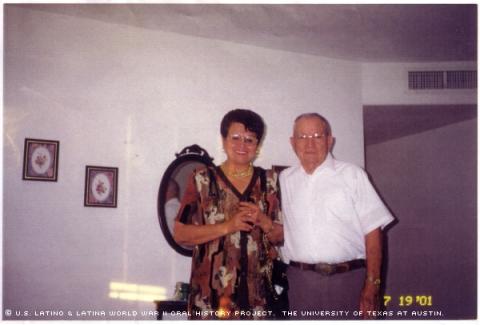

By Brandon Rawe
It was a time in America's history when communities were racially segregated and shunning minorities was accepted.
But none of that mattered during World War II to Henry Sillik, who served on a naval ship in the middle of the China-Burma-India Theater, the first racially equal setting in which he says he ever lived.
Sillik grew up in Buckeye, Ariz., a segregated town of about 600 outside of Phoenix. Sillik, who is of Anglo and Latino parentage, noticed the different standard of living for Hispanics.
"In Buckeye itself, there was some prejudice," Sillik said. "The town was divided into two areas: the white section and the Mexican section."
The predominantly Latino area had no paved roads and cheaper homes, while the other areas had paved roads, according to Sillik. Sillik and his family lived in the "white section."
Long before he enlisted, Sillik was fighting to find his ethnic identity. His father, Lafal Sillik, was of German decent, and his mother, Dolores Sanchez Sillik, emigrated from Mexico. From an early age, a young Henry had to deal with clashing languages. His parents didn’t speak the language of the other.
Sillik also had to deal with criticism from his Anglo and Hispanic friends. His white friends urged him not to play with the Latino children, while the Hispanic kids poked fun at him for playing with "gringos."
"It was a division I had to work out myself," Sillik said.
Like his father who served in World War I, Sillik felt it was his duty to fight for his country. The 17-year-old, despite his mother's objections, enlisted July 1, 1943.
"I quit high school to join the Navy," Sillik said. "I was pretty patriotic."
The Navy offered him many opportunities and experiences that he never would have had otherwise, Sillik said.
"The first time I saw the ocean was when I got to the training station in San Diego," he said.
But his new experiences in the Navy weren’t limited to discovering new places; Sillik discovered equality from his naval companions. Although he was the only Mexican American on his ship, every man treated him with respect.
"I got along with everybody," Sillik said. "We were there for a purpose, to do a job."
In a letter to the Project after his interview, Sillik wrote he trained at the San Diego Naval Training Station, was sent to the San Francisco Armed Guard Center on Treasure Island and was then assigned to the USS John Deere.
"I went aboard as a naval gunner and served 10 months in the Southwest Pacific Theatre from Australia to New Guinea and Solomon Islands," he wrote.
Sillik was stationed in the China-Burma-India (CBI) Theater on the USS John Deere, a merchant ship that had been outfitted with what he described as almost antique weapons. The Navy was reduced to using antiquated ships and equipment because most of its fleet was destroyed at Pearl Harbor, leaving ships like Sillik's to defend itself.
The naval group his ship was attached to was instrumental in the protection of CBI territories from Japanese forces. This part of the war, which is sometimes referred to as "the forgotten theater," was known for being understaffed with outdated equipment, but received little attention for performing tasks that were vital to the safety of these countries, according to several veterans' accounts.
Sillik helped remove the invading Japanese from the region.
He also served on two other ships: the SS Alcoa Pegasus, as a naval gunner, and the SS John B. Floyd, a troop-transport ship.
"Moving troops around the area was part of my job, plus bringing POWS from Japanese camps," he wrote.
Sillik’s WWII service wasn’t enough for him, however. He reenlisted in the Navy for another three-year tour only nine months after he returned home to Arizona. Sillik went on to become a "frogman," an underwater demolition expert, serving with Underwater Demolition Team 1 in 1947-1948, on Coronado Beach in San Diego, Calif. He was discharged Feb. 27, 1948.
Sillik married Maria Antonieta Carrasco August 13, 1955. The couple had two sons and two daughters: Francisco, Henry, Maria Guadalupe and Maria Dolores.
Mr. Sillik was interviewed in Tucson, Arizona, on January 5, 2003, by Violeta Dominguez.

